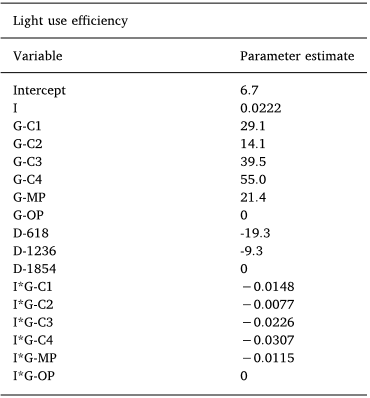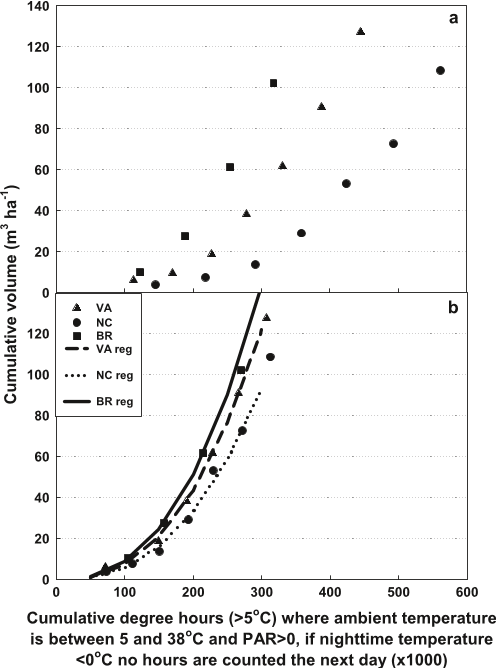Q1. What are the contributions in "A common garden experiment examining light use efficiency and heat sum to explain growth differences in native and exotic pinus taeda" ?
Other factors including respiration and extreme climatic conditions may contribute to growth differences per unit degree hour and including these differences in the analysis would require a more detailed modeling effort to examine. The sites used in this study are ideally suited to continue testing additional hypotheses to explain the different growth between native and exotic P. taeda plantations because they have the same genotypes at all sites and consequently eliminate differences in genetics as a potential explanation for observed growth differences.





